A simple Cajun-style rub and cast-iron sear make this blackened salmon crisp on the outside and moist inside, a quick family dinner that feels special.

This blackened salmon is incredible. The spice combination is amazing! Blackening keeps the inside of the fish extra juicy because searing it in a hot skillet seals the juices in. This technique works when making blackened halibut and blackened chicken, and it works here. Ready in about 25 minutes, this quick entree is perfect for a busy weeknight.
Ingredients
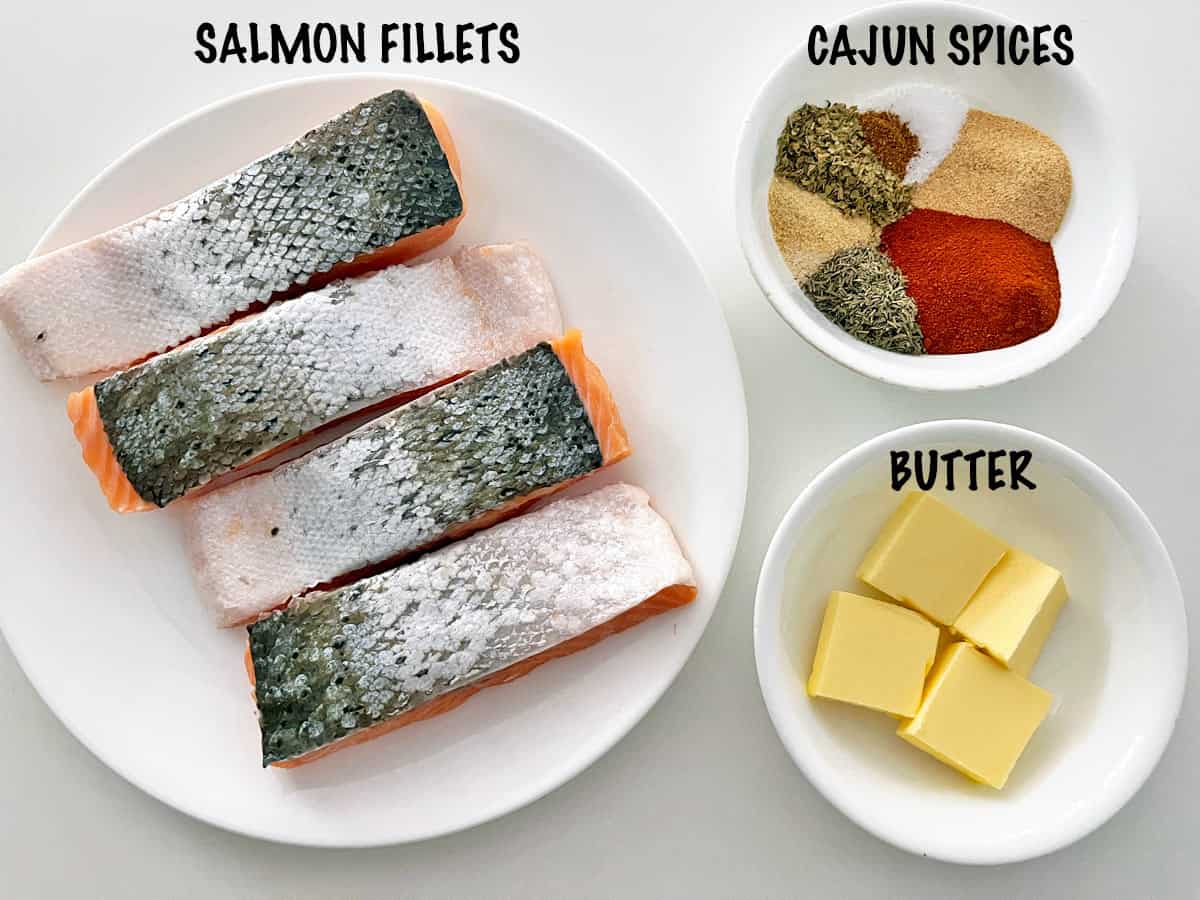
See the recipe card for exact measurements. Here are my comments on the ingredients.
- Dry rub: Kosher salt, paprika, garlic powder, onion powder, dried thyme, dried oregano, and cayenne pepper. You can make the rub as spicy as you like. I add just a bit of cayenne for a hint of spice. You can double the amount and make it truly spicy.
- Salmon fillets: Try to find fillets that are about the same size and thickness.
- Butter: The milk solids in the butter brown as we heat it, promoting blackening.
Instructions
The detailed instructions and step-by-step photos are included in the recipe card. Here's a quick overview.
Combine the dry rub ingredients in a bowl. Rub the spices all over the fish.
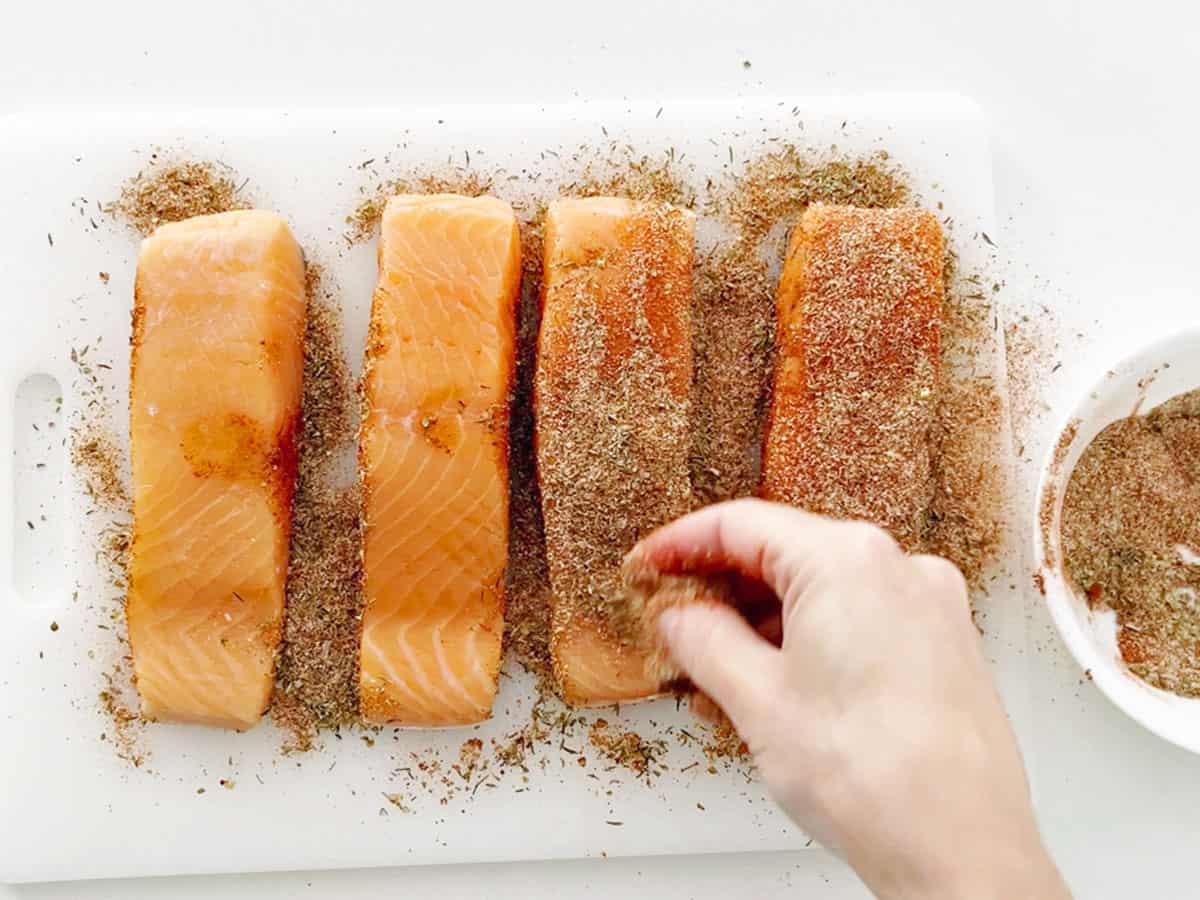
Cook the salmon in butter in a cast-iron skillet over medium heat, about 3 minutes per side. It won't be fully cooked at this point, but the outside will be nicely blackened.
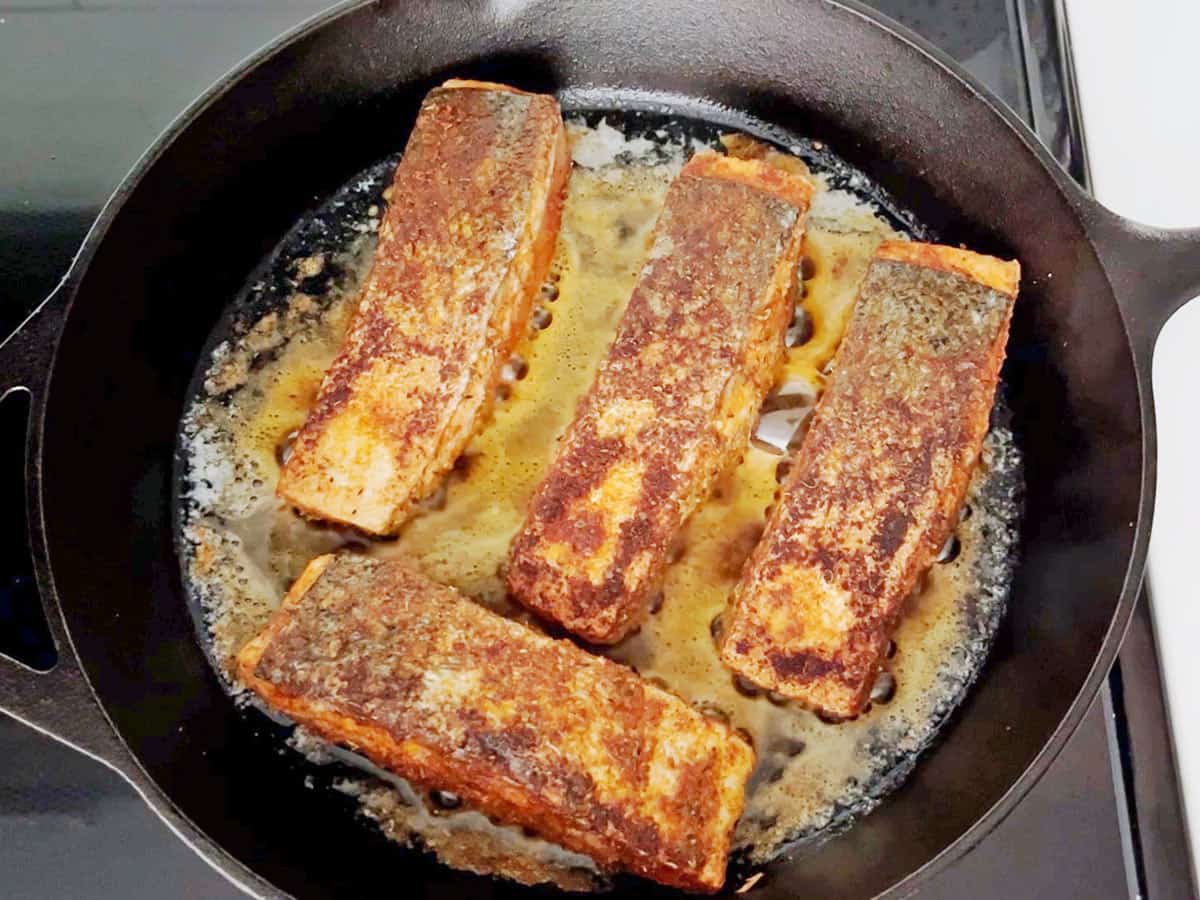
Place the skillet in a 425°F oven for 5-7 minutes to allow the inside of the fish to finish cooking and reach an internal temperature of 145°F. Serve immediately.
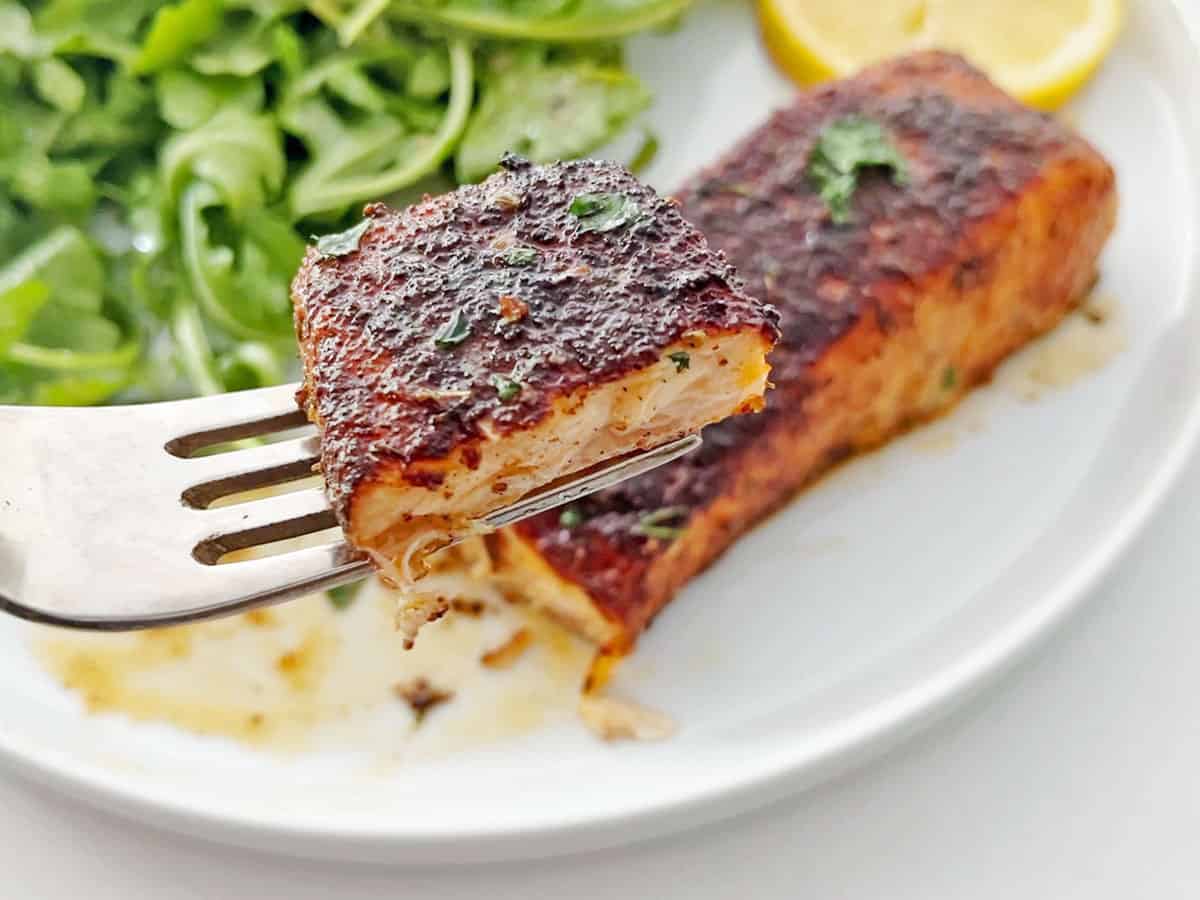
This was so good! I used smoked paprika but kept everything else the same. Thank you for a foolproof recipe!
June
Read more comments
Recipe Tips
- The reason we finish the dish in the oven is to make sure the salmon is fully cooked without charring the outside too much. As an alternative, you can remove the skillet from the heat, tightly cover it with foil (or a tight-fitting lid), and allow the fish to finish cooking in the skillet's residual heat for about 5 minutes. Check with a thermometer to make sure it has reached an internal temperature of 145°F.
- To ensure a crisp crust, it's helpful to blot the salmon pieces dry on paper towels before cooking them, as shown in the photo below.

Recipe FAQs
Blackening means coating food in a mixture of spices and cooking it in a hot skillet. The spice coating gets charred, giving the food a very dark, almost black appearance.
I use a well-seasoned cast-iron skillet. It's superb in terms of heat retention and does a really good job of blackening the fish. As long as the skillet is well-seasoned and you use plenty of butter, there shouldn't be any issue with the salmon sticking to the pan.
However, as shown in the photo below, it's OK to use a high-quality, heavy-bottomed nonstick skillet if it's oven-safe to at least 425°F.
I would advise against using a stainless steel skillet, as fish tend to stick to those.
Yes, but you should fully thaw it first. In fact, one of the reasons I like making this recipe is that I always have frozen salmon on hand. I thaw it for 24 hours in the fridge and blot it dry with paper towels to remove any extra moisture.
You can check by gently pressing the thickest part of the fillet - it should feel firm but still have a little "give," and the flesh should appear opaque and flake easily when you pull it with a fork. However, the only way to know for sure that the salmon is done is by using a thermometer.
Serving Suggestions
I like to serve blackened salmon with a side dish I can bake in the same 425°F oven, such as:
It's also good with simple sides like homemade coleslaw or cauliflower rice, both shown in the photos below.
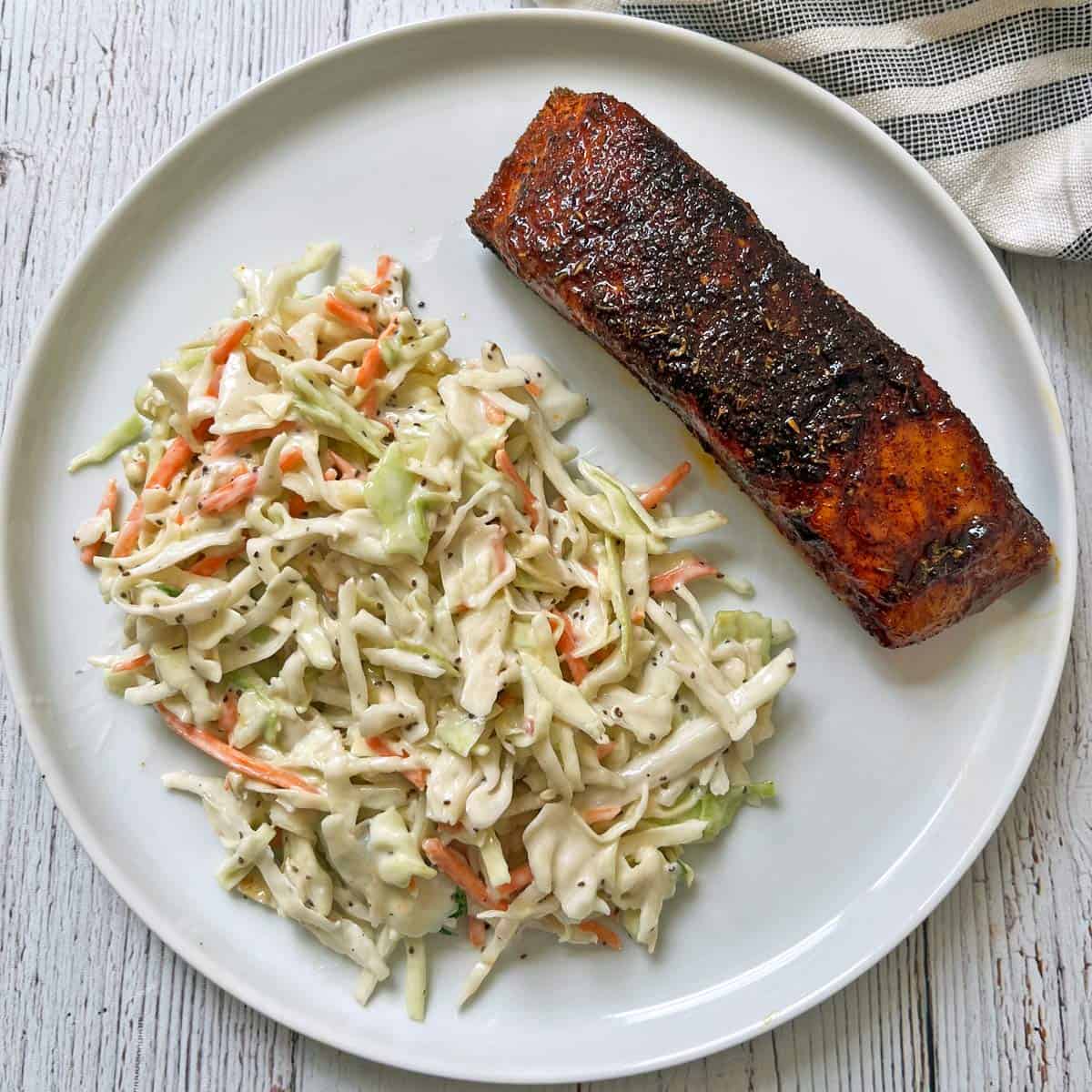

Storing and Using the Leftovers
You can keep the leftovers in an airtight container in the fridge for up to four days. I'm not a fan of reheating fish, as it becomes dry and fishy, so I serve the leftovers cold over a simple salad of lettuce and ranch dressing, as shown in the image below.

The cold leftovers are also delicious with pickled red onions and cucumber tomato salad, as shown in the image below.

Recipe Card
Blackened Salmon Recipe
Video
Ingredients
Dry rub:
- 1 teaspoon Diamond Crystal kosher salt - or ½ teaspoon of any other salt, including Morton kosher salt
- 2 tablespoons paprika
- 1 tablespoon dried thyme
- 1 tablespoon dried oregano
- 1 tablespoon onion powder
- 1 tablespoon garlic powder
- ¼ teaspoon cayenne pepper
Salmon:
- 4 salmon fillets - 6 ounces each, skin-on, pin bones removed
- 4 tablespoons butter
Instructions
- Preheat the oven to 425°F. In a small bowl, combine the kosher salt, paprika, thyme, oregano, onion powder, garlic powder, and cayenne.
- Pat the salmon fillets dry with paper towels. Sprinkle them with the seasoning mixture, pressing with your fingers to help the coating adhere.
- Heat the butter in a large 12-inch well-seasoned cast iron skillet over medium heat. Swirl to coat.
- When the butter starts foaming, add the salmon fillets, skin-side down. Cook them undisturbed until their bottoms are blackened, about 2-3 minutes.
- Turn the fillets to the other side and cook them for about 2-3 more minutes to blacken the skin side.
- Carefully, using oven mitts, transfer the hot skillet to the preheated oven. Let the fish finish cooking in the oven until its internal temperature reaches 145ºF, about 5-7 minutes.
- Transfer the fish to plates, spoon the pan juices on top, and serve.
Notes
- The reason we finish the dish in the oven is to make sure the inside of the fish is fully cooked without charring the outside too much. As an alternative, you can remove the skillet from the heat, tightly cover it with foil (or a tight-fitting lid), and allow the fish to finish cooking in the skillet's residual heat for about 5 minutes. It should reach an internal temperature of 145°F.
- You can use frozen salmon, but you should fully thaw it first. I thaw it for 24 hours in the fridge and blot it dry with paper towels to remove any extra moisture.
- Don't over-flip. Let the salmon sear undisturbed until a dark crust forms.
- Blackened seasoning can create smoke, so open a window and/or run your vent fan.
- You can keep the leftovers in an airtight container in the fridge for up to four days. I don't like reheated salmon - it tastes fishy - so I serve them cold over a salad.
Nutrition per Serving
Save this Recipe!
We will also add you to our weekly newsletter. Unsubscribe anytime. See healthyrecipesblogs.com/privacy/ to learn how we use your email.
Disclaimers
Most recipes are low-carb and gluten-free, but some are not. Recommended and linked products are not guaranteed to be gluten-free. Nutrition info is approximate. Please verify it independently. The carb count excludes non-nutritive sweeteners. Please read these Terms of Use before using any of my recipes.

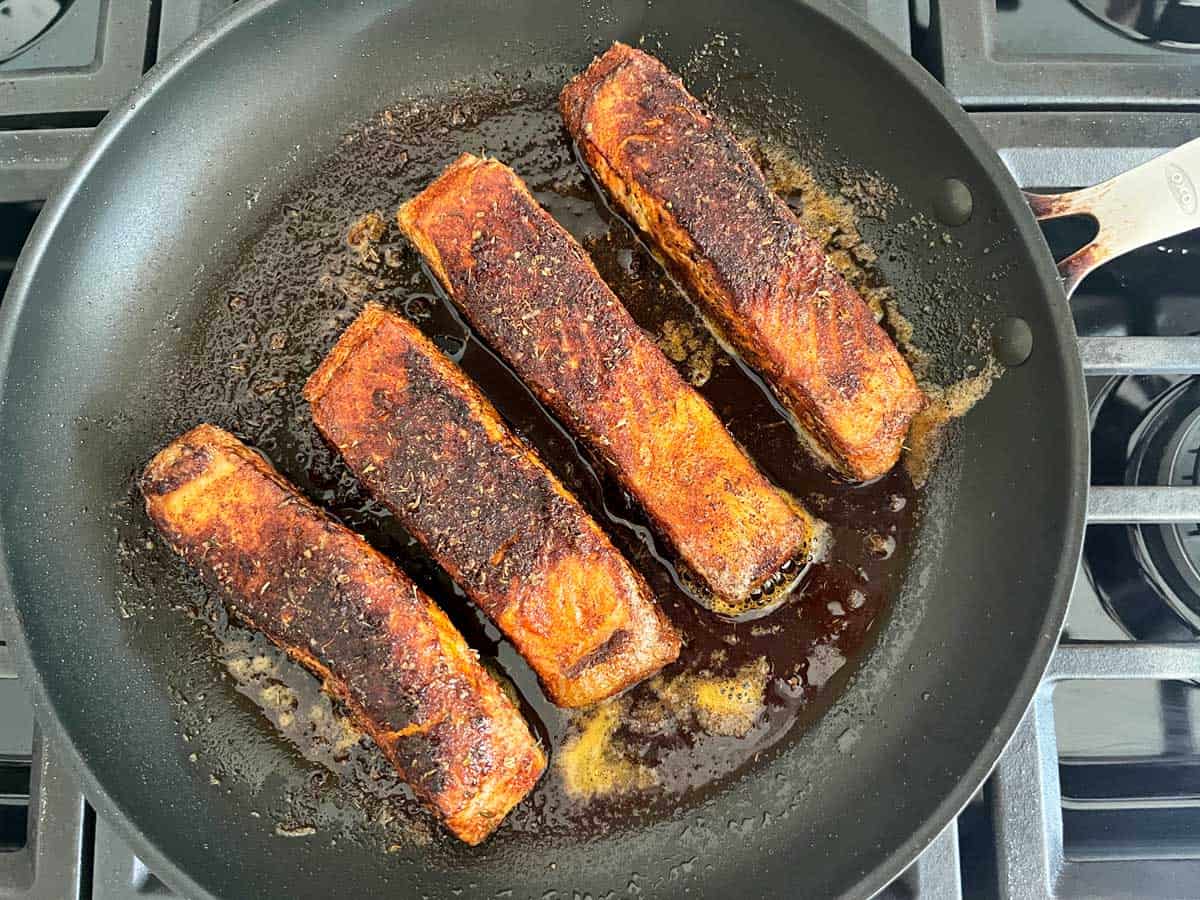
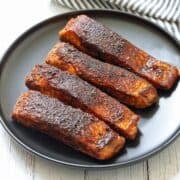
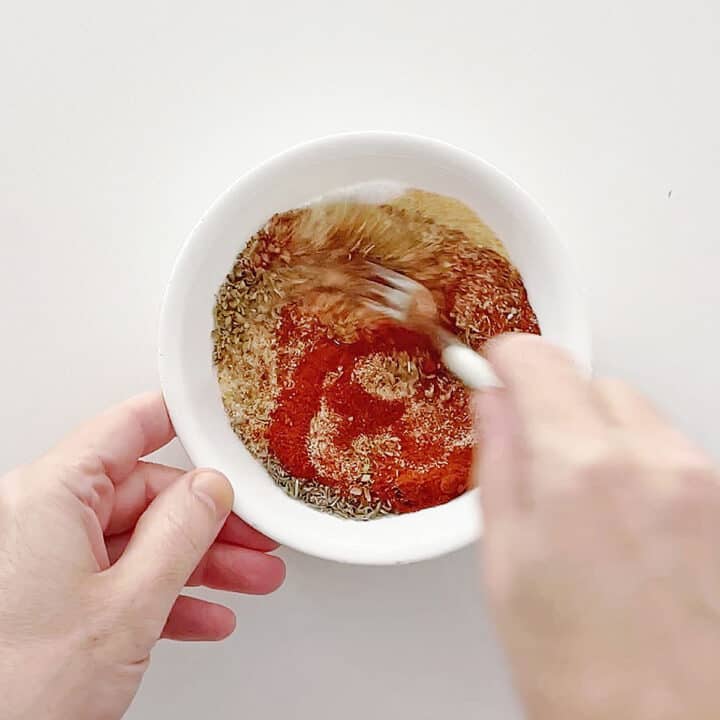
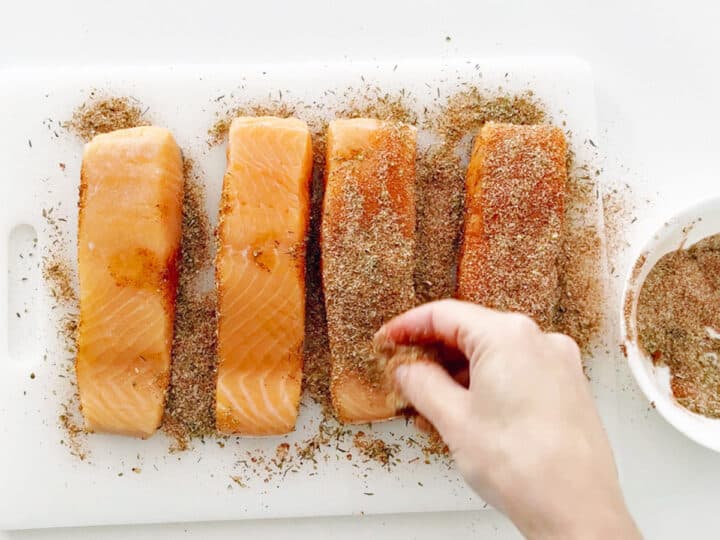

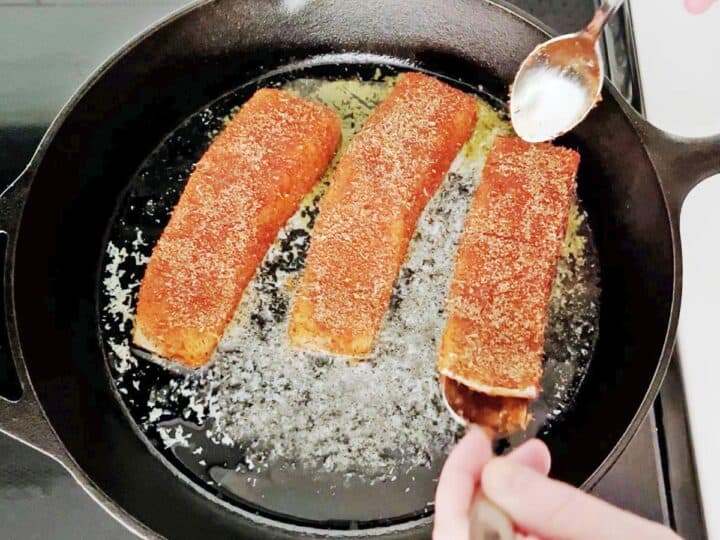

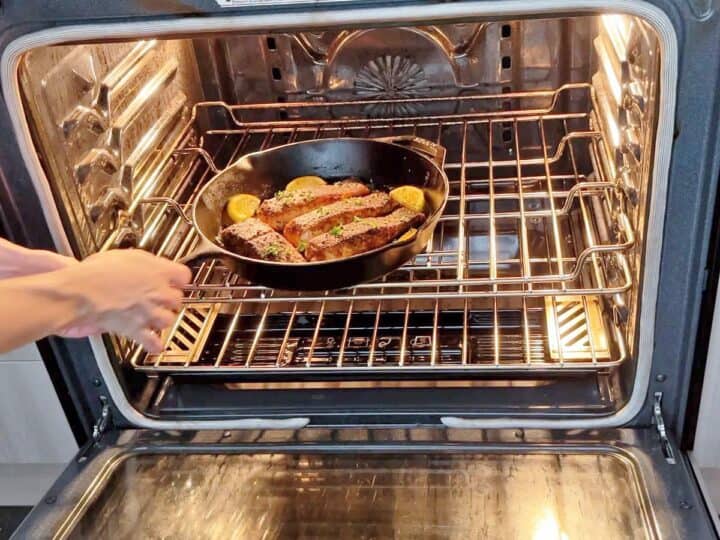



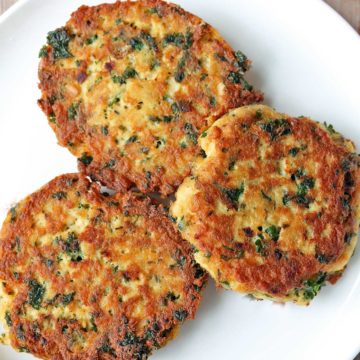
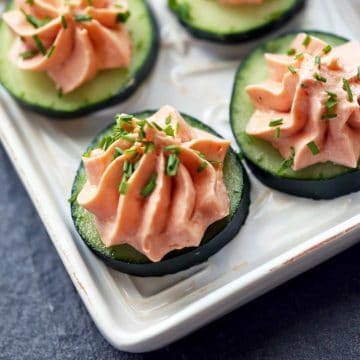

Teresa M Wiles says
Everyone raved about this recipe. So good!
Vered DeLeeuw says
I'm so glad, Teresa! Thank you very much for the review.
Gerhard says
I am making it this weekend. A forgotten favorite of my wife and I
Vered DeLeeuw says
Wonderful, Gerhard! I hope you will both enjoy it.
Judy says
I made it with boneless skinless chicken breast and it came out very good. I have to learn how to sear in a frypan better. I had never made blackened before so I'm leaning. Any advice on how to not burn the fry pan?
Vered DeLeeuw says
Great question, Judy! The trick is keeping the pan hot enough to sear but not so hot that the spices scorch. Cooking over medium heat as the recipe instructs should prevent overheating, but if the pan starts smoking a lot or the spices become too dark too fast, lower the heat slightly. Stovetops do vary. Specifically, electric stoves often run too hot.
June says
This was so good! I used smoked paprika but kept everything else the same. Thank you for a foolproof recipe!
Vered DeLeeuw says
I'm so glad you enjoyed this recipe, June! Thank you for taking the time to write your feedback.